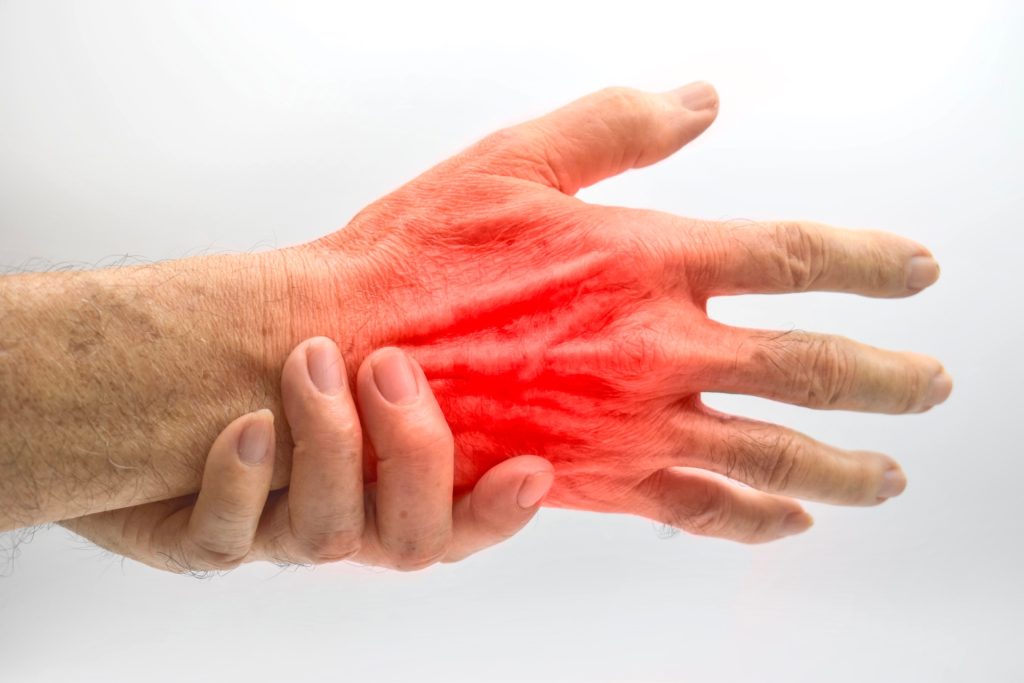
Wrist tendonitis also known as DeQuervain’s tenosynovitis is a condition characterized by inflammation of the tendons in the wrist area. It typically occurs due to repetitive motions or overuse of the wrist, leading to pain, swelling, and discomfort.
At Academy Orthopedics, we specialize in addressing wrist tendonitis, a prevalent orthopedic condition characterized by inflammation and irritation of the tendons surrounding the wrist joint. Our expertise in orthopedic hand care positions us as leaders in providing comprehensive solutions to alleviate discomfort and restore functionality for our patients.
With a dedicated focus on personalized treatment approaches, we strive to deliver exceptional care tailored to individual needs, emphasizing both non-surgical interventions and advanced surgical techniques.
👉Also Read: How to Find the Best Orthopedic Surgeon for Your Needs
Causes of Wrist Tendonitis
Wrist tendonitis, characterized by inflammation of the tendons surrounding the wrist joint, can arise from several factors:
Repetitive Movements: Continuous, repetitive wrist motions, common in occupations involving typing, using hand tools, or sports like tennis, can lead to overuse injuries and tendon strain.
Overuse and Strain: Excessive use of the wrist without adequate rest can result in micro-tears in the tendons, leading to inflammation and tendonitis.
Poor Ergonomics: Improper positioning of the wrist during activities, along with inadequate ergonomic setups, can increase strain on the tendons and contribute to the development of tendonitis.
Trauma or Injury: Acute trauma or injury to the wrist, such as sudden impact or forceful movement, can damage the wrist tendons and trigger inflammation, predisposing individuals to tendonitis.
Age and Degeneration: As individuals age, tendons may degenerate and become less flexible, making them more susceptible to inflammation and injury, including tendonitis.
The tendon sheath plays a vital role in maintaining the health and functionality of the tendons in the wrist. These sheaths, which are thin, lubricated membranes surrounding the tendons, help reduce friction and facilitate smooth movement.
In conditions like wrist tendonitis, the integrity of the tendon sheaths may become compromised due to inflammation or irritation. When the sheaths are inflamed or swollen, they may constrict the tendons, leading to pain, stiffness, and limited range of motion.
Symptoms and Signs of Wrist Tendonitis
Symptoms of wrist tendinitis typically include pain and swelling in the hand and wrist region. Individuals may experience discomfort during wrist movements or when gripping objects. Inflammation of the tendon sheaths can further exacerbate symptoms, leading to a limited range of motion, wrist pain, and stiffness in the wrist joint. Early diagnosis is crucial for prompt treatment and to prevent further complications, emphasizing the importance of recognizing and addressing symptoms promptly.
Precision Diagnostics and Tailored Treatment Plans

At Academy Orthopedics, our diagnostic process involves comprehensive physical exams informed by extensive knowledge and the latest studies. We meticulously identify specific tendons and tendon sheaths affected, aiming to pinpoint underlying issues causing discomfort. Utilizing advanced diagnostic techniques, exam tests such as the Finkelstein test for conditions like DeQuervain’s tenosynovitis, we can confirm the diagnosis with precision. This detailed evaluation guides the development of tailored treatment plans, optimizing the path to recovery and ensuring superior patient outcomes.
Non-Surgical Treatment Approaches for Injured Tendon
If you are wondering how to treat tendonitis in hand and wrist, then it is important to consider both non-surgical and surgical therapy options.
Non-surgical treatment approaches prioritize understanding the specific condition through proper diagnosis. These methods include avoiding activities that exacerbate swelling and pain, applying ice, using splints for hand support and immobilization, and medications, particularly anti-inflammatory drugs can significantly reduce pain and alleviate symptoms.
Additionally, corticosteroid injections may be recommended by physicians to alleviate swelling of the tendon sheath. These conservative measures aim to manage symptoms effectively, relieve pain, and promote healing without the need for surgical intervention.
👉Also Read: At Home Remedies for Hand and Wrist Tendonitis
Exploring Surgical Solutions for Treating Tendonitis at Academy Orthopedics
When non-surgical treatments fail to provide relief for wrist tendonitis, surgical interventions may be considered. Small incision procedures, such as tendon debridement or repair, may be performed to address damaged tendons and restore functionality. These surgical interventions offer viable options for individuals with persistent wrist tendinitis pain, aiming to alleviate symptoms and improve overall hand and wrist function.
However, surgery is usually considered only after exhausting non-surgical treatment options and assessing the severity of the condition and the patient’s response to conservative measures.
Orthopedic surgeons at Academy Orthopedics prioritize patient well-being and strive to explore surgical options only when necessary, aiming to achieve optimal outcomes and improved quality of life. In addition, our surgeons utilize cutting edge hand and wrist surgery techniques such as Wide Awake Local Anesthesia No Tourniquet (WALANT) surgery to get you back to your life faster.
Preventive Measures and Lifestyle Changes
To prevent wrist tendonitis or tendon injury, consider the following tips:
- Take regular breaks during repetitive tasks involving the wrists to alleviate continuous strain.
- Minimize engagement in repetitive activities that may lead to or exacerbate wrist tendonitis.
- Utilize supportive braces when undertaking repetitive activities like typing or tasks that may stress the wrists.
- Incorporate wrist-stretching exercises into your routine to enhance flexibility and reduce the risk of tendonitis or tendon injuries.
👉Also Read: Where Does It Hurt? Why an Orthopedic Doctor Asks These Questions
Experience Exceptional Hand and Wrist Care with Academy Orthopedics!
Timely and proper medical care is paramount for effectively addressing symptoms and preventing further complications. Our physicians at Academy Orthopedics play a vital role in providing expert care and treating wrist tendonitis. We emphasize the importance of proactive health maintenance to ensure long-term wellness and optimal hand function.
With our expertise and dedication to patient care, we empower individuals to lead active and fulfilling lives free from the limitations of wrist tendonitis. Contact us or schedule an appointment today to begin your journey toward recovery and improved quality of life.
